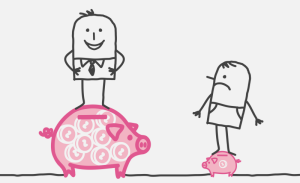You ever notice that the difference between illness and wellness, sometimes, is who’s experiencing the symptoms, who’s doing the diagnosis?
I stepped in my time machine the other day, you know, my Tardis. I’m actually a time lord. I stepped in my time machine and decided to travel back to the middle of the 19th century. And I learned a few things, made a couple of discoveries that I would like to share with you this evening. See, that way you will be well poised for Black History Month 2015. It’s my gift to you.
One of the things that I learned was this term called Drapetomania, which sounds like a passion for curtains. It’s not about curtains at all. It’s actually a suggested diagnosis for enslaved Africans who tried to run away.
Let’s just take a moment to fully metabolize this idea, shall we? Come with me on this one. Enslaved Africans who wanted to be free, and wanted to have self-determination were actually sick, actually ill. Now, what’s interesting is that during the same time, white people were just expressing their desire for freedom, and just manifesting their destiny. What’s the difference? Now it’s clear.
Another suggested diagnosis was Rascality. Rascality was essentially laziness because—well—in the 19th century, black people were, if anything, they were definitely lazy, not doing a lot of work, just kind of free-loading, sponging off…
And I really feel like this marriage of racism and science has a timeless quality to it. Because I’m a time lord, I feel confident to say that there’s things in my travels that I’ve seen, different diagnoses that I might give, you know, today. I’d like to share those with you, just briefly.
The first one is Necolalia. Say that with me, [speaker and the audience:] “Necolalia.” So Necolalia is non-black people using the “N” word. So, I might say, “Justin, I know Wiz Khalifa uses the ‘N’ word. I know, and I know that you want to use it, too. And it’s just kind of in your mouth like a Werther’s Original, just rolling, and you wanna [inaudible 04:09] to say it, but in the words of Billie Holiday, (singing) ‘Hush now… Hush now…'”
Okay, so the next one is Veruca Salt Syndrome [named after a character in Charlie and the Chocolate Factory]. You know what I’m talking about? Her [mom?] owned the factory, she entitled to everything, she wanted to whoop [it up?]. Veruca Salt Syndrome is being entitled to caricaturing people of color. So examples of this might be Aunt Jemima, Rascus (the guy on the cream of wheat box). Just so you know that corporations are actually made up of people who sometimes have a Veruca Salt Syndrome.
Also, another example are any of the sports teams that thing that they are honoring Native American folks. I could also say that on an individual level, one person who has been afflicted for quite some time now is Gwen Stefani. She needs to be healed.
The last one which I feel it’s just rampant, it’s pervasive, I feel like the Centers For Disease Control really need to really step up their game. This one is Ethnoklepto. Ethonoklepto is appropriating other cultures, people of colors’ practices, to fill an emotional void. Another thing I might say is, “Miley, that bindi is not yours to wear. I encourage you to explore the spiritual practices of your fore-parents. It’s there…somewhere… so you need to find it.”
Thank you very much.




















